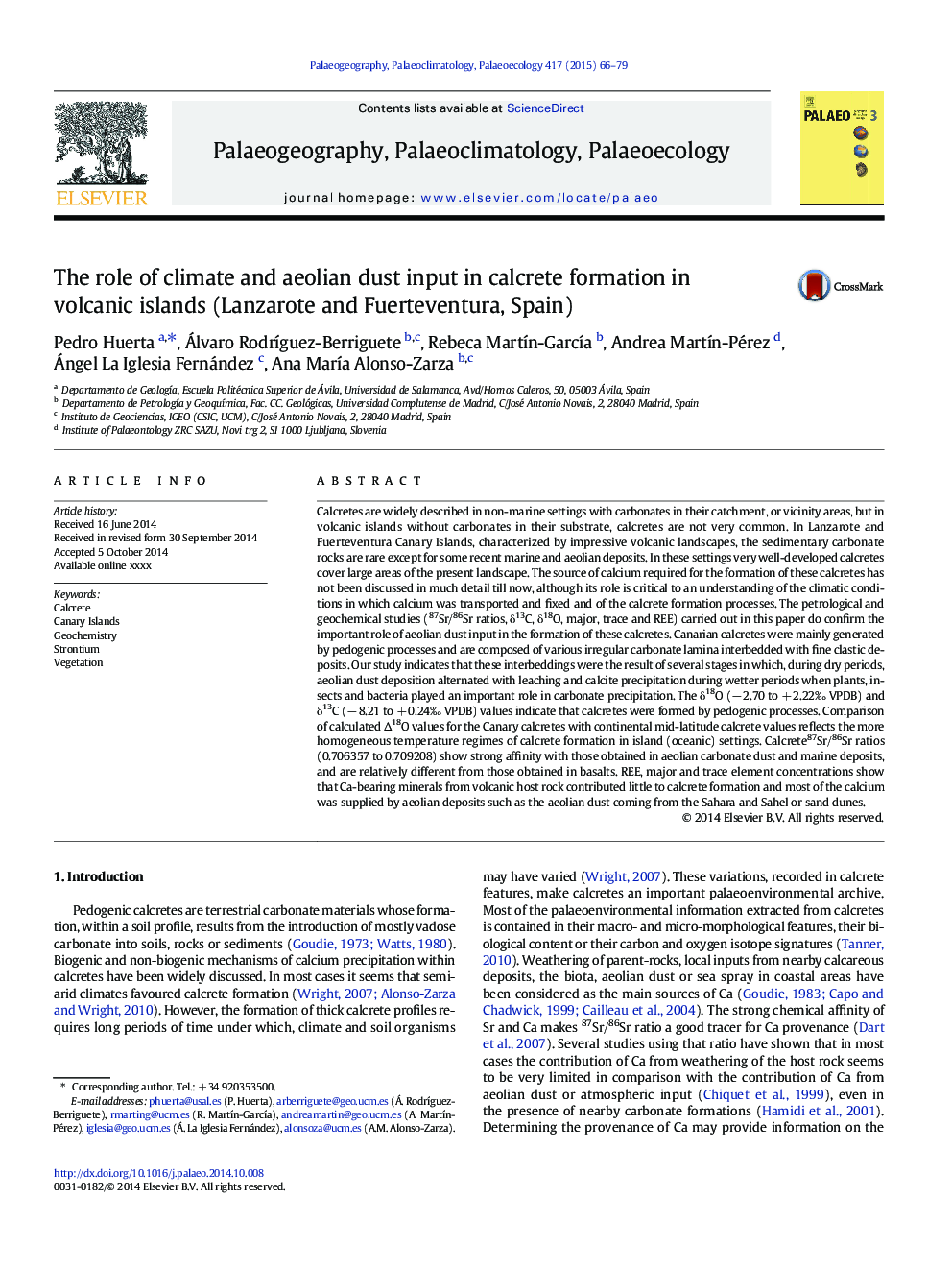| کد مقاله | کد نشریه | سال انتشار | مقاله انگلیسی | نسخه تمام متن |
|---|---|---|---|---|
| 6349842 | 1622173 | 2015 | 14 صفحه PDF | دانلود رایگان |
عنوان انگلیسی مقاله ISI
The role of climate and aeolian dust input in calcrete formation in volcanic islands (Lanzarote and Fuerteventura, Spain)
ترجمه فارسی عنوان
نقش آب و هوا و ورودی گرد و غبار در شکل گیری کالکرت در جزایر آتشفشانی (لانزروته و فوئرتونتورا، اسپانیا)
دانلود مقاله + سفارش ترجمه
دانلود مقاله ISI انگلیسی
رایگان برای ایرانیان
کلمات کلیدی
موضوعات مرتبط
مهندسی و علوم پایه
علوم زمین و سیارات
فرآیندهای سطح زمین
چکیده انگلیسی
Calcretes are widely described in non-marine settings with carbonates in their catchment, or vicinity areas, but in volcanic islands without carbonates in their substrate, calcretes are not very common. In Lanzarote and Fuerteventura Canary Islands, characterized by impressive volcanic landscapes, the sedimentary carbonate rocks are rare except for some recent marine and aeolian deposits. In these settings very well-developed calcretes cover large areas of the present landscape. The source of calcium required for the formation of these calcretes has not been discussed in much detail till now, although its role is critical to an understanding of the climatic conditions in which calcium was transported and fixed and of the calcrete formation processes. The petrological and geochemical studies (87Sr/86Sr ratios, δ13C, δ18O, major, trace and REE) carried out in this paper do confirm the important role of aeolian dust input in the formation of these calcretes. Canarian calcretes were mainly generated by pedogenic processes and are composed of various irregular carbonate lamina interbedded with fine clastic deposits. Our study indicates that these interbeddings were the result of several stages in which, during dry periods, aeolian dust deposition alternated with leaching and calcite precipitation during wetter periods when plants, insects and bacteria played an important role in carbonate precipitation. The δ18O (â 2.70 to + 2.22â° VPDB) and δ13C (â 8.21 to + 0.24â° VPDB) values indicate that calcretes were formed by pedogenic processes. Comparison of calculated â18O values for the Canary calcretes with continental mid-latitude calcrete values reflects the more homogeneous temperature regimes of calcrete formation in island (oceanic) settings. Calcrete87Sr/86Sr ratios (0.706357 to 0.709208) show strong affinity with those obtained in aeolian carbonate dust and marine deposits, and are relatively different from those obtained in basalts. REE, major and trace element concentrations show that Ca-bearing minerals from volcanic host rock contributed little to calcrete formation and most of the calcium was supplied by aeolian deposits such as the aeolian dust coming from the Sahara and Sahel or sand dunes.
ناشر
Database: Elsevier - ScienceDirect (ساینس دایرکت)
Journal: Palaeogeography, Palaeoclimatology, Palaeoecology - Volume 417, 1 January 2015, Pages 66-79
Journal: Palaeogeography, Palaeoclimatology, Palaeoecology - Volume 417, 1 January 2015, Pages 66-79
نویسندگان
Pedro Huerta, Álvaro RodrÃguez-Berriguete, Rebeca MartÃn-GarcÃa, Andrea MartÃn-Pérez, Ángel La Iglesia Fernández, Ana MarÃa Alonso-Zarza,
